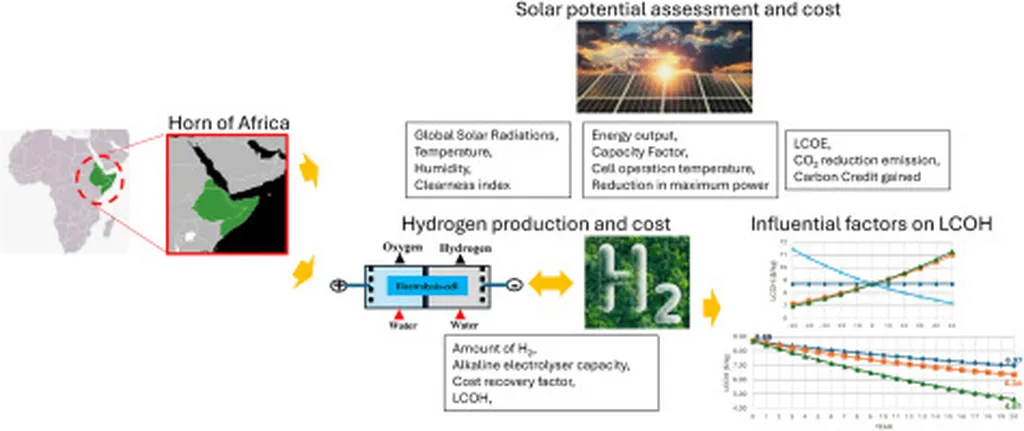In the quest for green hydrogen production, a recent study has shed light on the techno-economic feasibility of solid oxide electrolysis (SOE) when integrated with solar photovoltaics (PV) and batteries. The research, led by Gonzalo Jiménez-Martín of the National Renewable Energy Centre of Spain (CENER) and the Public University of Navarre, offers valuable insights into the viability of this technology in real-world applications, particularly in the Spanish context.
The study, published in the journal ‘Energy Conversion and Management: X’, evaluated the levelized cost of hydrogen (LCOH) considering daily power profiles at four key industrial hubs in Spain: Puertollano, Tarragona, Algeciras, and A Coruña. The findings reveal that maximizing the capacity factor of SOE systems does not necessarily translate to lower LCOH. Instead, there is an optimal value that can be achieved. “We found that a LCOH of approximately 5 €·kg−1 could be attained at the locations under study for different plant features,” Jiménez-Martín explained.
The research also highlighted that Puertollano, Tarragona, and Algeciras offer slightly lower LCOH due to better weather conditions compared to A Coruña. This underscores the importance of geographical factors in the techno-economic assessment of green hydrogen production.
One of the most compelling aspects of the study is its sensitivity analysis, which examined the impact of SOE stack cost and lifetime on LCOH. The results suggest that further optimization of these parameters could potentially reduce the LCOH to 4 €·kg−1. “This indicates that there is still room for improvement in the SOE technology, which could make green hydrogen production even more cost-competitive,” Jiménez-Martín noted.
The implications of this research are significant for the energy sector. As the world moves towards a low-carbon economy, green hydrogen is emerging as a crucial energy carrier. The findings of this study provide a roadmap for stakeholders to optimize the integration of SOE with PV and batteries, ultimately driving down the cost of green hydrogen production.
Moreover, the study’s focus on the Spanish context offers valuable insights that can be applied to other regions with similar climatic conditions. This could facilitate the widespread adoption of SOE technology, contributing to the global effort to reduce carbon emissions and combat climate change.
In conclusion, the research led by Gonzalo Jiménez-Martín represents a significant step forward in the quest for cost-effective green hydrogen production. By providing a comprehensive techno-economic assessment of SOE integration with PV and batteries, the study offers a valuable guide for stakeholders in the energy sector. As the world continues to transition towards a sustainable energy future, the insights from this research will be instrumental in shaping the development of green hydrogen technologies.

